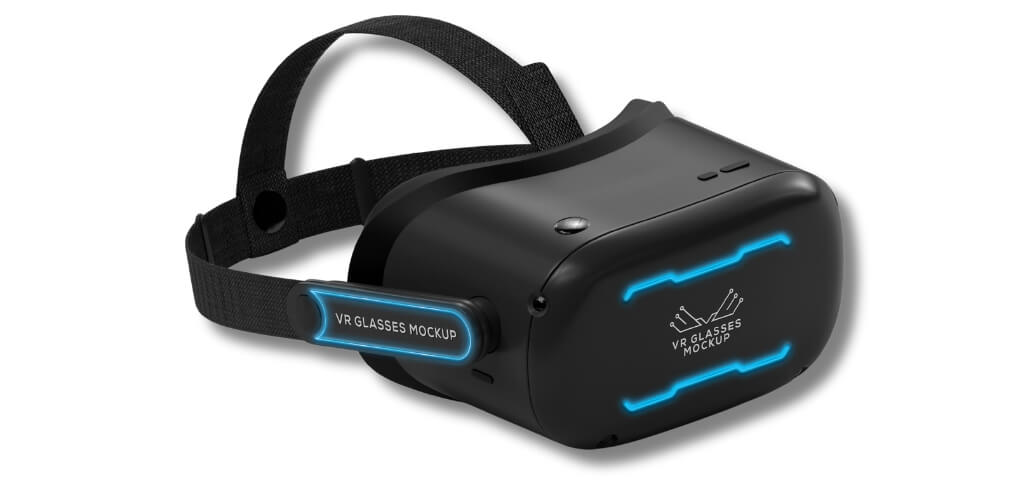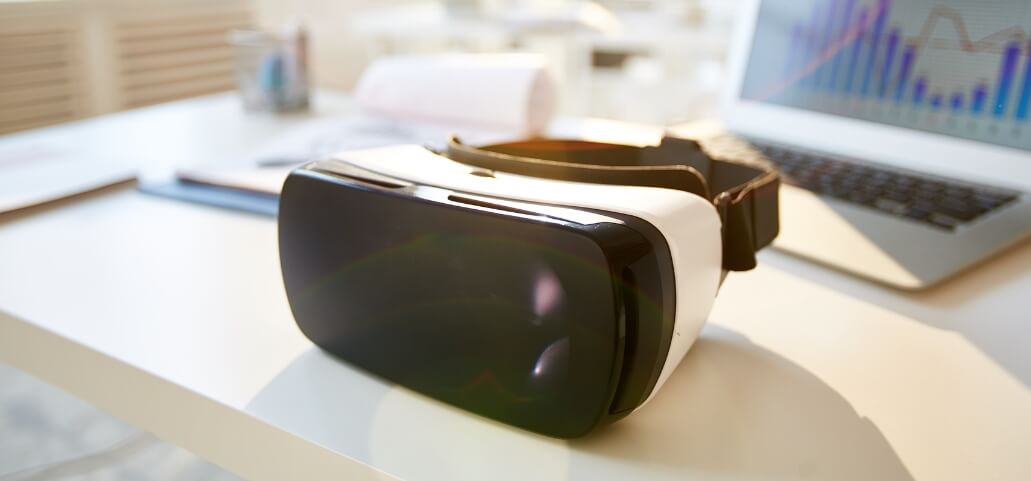Knowing how to connect VR headset to TV can enhance your VR adventures by allowing friends and family to join in the fun. The advent of virtual reality (VR) has completely altered our interaction with digital media by allowing us to enter other universes in a single, immersive encounter. However, sometimes you want to share that experience with others by displaying it on a larger screen. In this guide, we’ll walk you through the simple steps needed to connect your VR headset to your TV, ensuring you can enjoy and share your VR experiences seamlessly. So let’s dive in and explore how to connect VR headset to tv.
Benefits of Connecting VR to TV
Connecting a VR headset to your TV offers several advantages. Firstly, it allows others to watch and engage with the VR experience, turning a solo activity into a shared entertainment event. This can be particularly enjoyable during social gatherings, where friends and family can take turns immersing themselves in VR while everyone else watches on the big screen. Additionally, displaying VR content on a TV can help newcomers understand the technology better, making them more inclined to try it themselves.
Types of VR Headsets and Compatibility
Before you start connecting your VR headset to your TV, it’s essential to understand the different types of VR headsets and their compatibility. Some popular VR headsets include the Oculus Quest 2, PlayStation VR, HTC Vive, and Valve Index. Each of these headsets may have different connectivity options, so it’s crucial to check the manufacturer’s guidelines for compatibility with your TV and other devices.
- Oculus Quest 2: This standalone headset can be connected to a TV using Chromecast or a compatible casting device.
- PlayStation VR: Designed for use with PlayStation consoles, it connects to a TV through the console itself.
- HTC Vive and Valve Index: These PC-based headsets can be connected to a TV via HDMI or DisplayPort through the computer.
Step-by-Step Guide How to Connect VR Headset to TV

Now that we’ve gone over the fundamentals, let’s get into the specifics of how to hook up different virtual reality headsets to a television. This will enhance your VR experience by allowing others to view what you see in real time.
Oculus Quest 2:
- Set Up Chromecast: Begin by plugging a Chromecast device into your TV’s HDMI port and powering it up. For smooth streaming, connect the Oculus Quest 2 and Chromecast to the same Wi-Fi network.
- Open the Oculus App: On your smartphone, open the Oculus app. Navigate to the menu and select the ‘Cast’ option, which will allow you to stream your VR experience to your TV.
- Select Your TV: From the cast list, choose your Chromecast device as the output screen, and then put on your Oculus Quest 2 headset.
- Start Casting: In the Oculus Quest 2 menu, go to ‘Share,’ then ‘Cast,’ and finally select your Chromecast device from the available options. Your VR experience will now be displayed on your TV, allowing others to watch along.
PlayStation VR:
- Connect to PlayStation Console: Plug the PlayStation VR’s processing unit into your PlayStation console using the provided HDMI and USB cables. This unit helps in processing the VR signals and ensuring a smooth display.
- Connect to TV: Use another HDMI cable to connect the PlayStation console to your TV, enabling the video output to appear on the larger screen.
- Power Up: Turn on your TV, PlayStation console, and PlayStation VR headset. Ensure all devices are properly powered and connected.
- Adjust Settings: Navigate to the ‘Settings’ menu on your PlayStation console. Select ‘Devices,’ then ‘PlayStation VR,’ and configure your display settings to ensure optimal performance and clarity on your TV.
HTC Vive and Valve Index:
- Connect to PC: Begin by plugging your HTC Vive or Valve Index headset into your computer using the provided link box and cables (HDMI or DisplayPort and USB). This link box acts as an intermediary, facilitating the connection between your headset and PC.
- Connect PC to TV: Use an HDMI or DisplayPort cable to connect your computer to your TV. This will allow your TV to act as a secondary display for your VR content.
- Configure Display Settings: On your computer, open the display settings. Ensure that your TV is set as a secondary display, and adjust the resolution if necessary for the best viewing experience.
- Launch VR: Open SteamVR or the specific VR application you’re using. Your VR content will be mirrored on your TV, allowing others to see what you see in your virtual reality headset.
By following these steps, you can easily share your VR experiences with friends and family, making your virtual adventures even more enjoyable and interactive.
How to Connect VR Headset to Samsung TV
If you own a Samsung TV, you may be wondering how to connect your VR headset to it. The process is quite similar to connecting other types of VR headsets, with a few minor differences.
- Connect VR Headset via Chromecast: Like the Oculus Quest 2, you can use a Chromecast device to mirror your VR experience on a Samsung TV. Simply follow the same steps as mentioned above for the Oculus Quest 2.
- Use Smart View Feature: If you have a newer Samsung TV model and smartphone, you can use the Smart View feature to stream content directly from your phone to your TV. This works well for VR apps that are available on your phone, such as Google Cardboard or Samsung Gear VR.
- Use HDMI Cable: If your VR headset supports an HDMI connection, you can use an HDMI cable to connect it directly to your Samsung TV. However, not all VR headsets have this option available.
- Follow Manufacturer Guidelines: As always, it’s essential to follow the manufacturer’s guidelines for connectivity and compatibility when connecting your VR headset to a Samsung TV.
- Consider Wireless HDMI Options: If you don’t want to deal with cables, there are wireless HDMI options available that allow you to stream content from your VR headset to your TV without the need for physical connections.
- Use Game Console: If you own a PlayStation or Xbox console, you can also connect your VR headset to the console and then mirror the content on your TV. This is another great option for Samsung TV owners.
- Use Casting Apps: Some VR headsets have casting apps available that allow you to stream your VR experience directly to your Samsung TV. Check the app store for your specific headset to see if this option is available.
Tips for Optimal Performance
When connecting your VR headset to a TV, there are a few tips you can follow for optimal performance and viewing experience:
- Make sure everything is connected and has enough juice.
- Use high-speed internet for smooth streaming.
- To free up processing power, close any programs that aren’t essential on your phone or computer.
- Adjust display settings as needed for the best resolution and frame rate.
- Make sure your TV is in ‘Game Mode’ to minimize input lag and latency.
By following these tips, you can ensure a seamless and enjoyable VR experience for both yourself and those watching along on the TV.
Future of VR and TV Integration
We should anticipate even more seamless interaction between VR and TV as VR technology evolves further. Some potential developments in this area may include:
- VR headsets with built-in wireless casting capabilities, eliminating the need for additional devices like Chromecast.
- More advanced VR displays that can seamlessly switch between displaying content on a headset and a larger screen.
- Virtual reality experiences designed specifically for TV viewing, allowing multiple viewers to interact with the VR environment simultaneously.
- Improved resolution and frame rates for smoother streaming and better quality on TVs.
Conclusion
Finally, if you want to make the most of your virtual reality experience and invite others to participate in, try hooking up your headset to a TV. With advancements in technology and continued integration between VR and TVs, we can expect to see even more exciting possibilities for shared VR experiences in the future. So grab your VR headset, connect it to your TV, and get ready for an immersive adventure like no other. So don’t wait any longer – start exploring the world of virtual reality with friends and family today! Happy viewing!
Frequently Asked Questions
Q1: How to connect VR headset to TV without cables?
Answer: Some VR headsets have wireless casting capabilities or apps that allow you to stream content directly to your TV without the need for cables.
Q2. Can I connect any VR headset to my TV?
Answer: While most modern VR headsets can be connected to a TV, the method may vary depending on the model. For information on how to connect and ensure compatibility, always check the manufacturer’s manual.
Q3. Will connecting my VR headset to a TV affect the performance?
Answer: Using a stable Wi-Fi connection and optimizing display settings can minimize any performance issues. If you want the greatest results, make sure both devices have the most recent firmware.
Q4. Can I use wireless casting to connect my VR headset to a TV?
Answer: Yes, wireless casting is possible with certain VR headsets like the Oculus Quest 2 using devices like Chromecast. This allows for a more convenient and cable-free setup.
Q5. What should I do if I experience lag or connectivity issues?
Answer: Ensure both your VR headset and TV are connected to a stable Wi-Fi network. Additionally, check for any firmware updates and optimize the display settings for better performance.
Disclaimer: This blog post’s content is derived from the most recent product specs and technological advancements. While we strive to provide the most accurate information, technology is always evolving. Always refer to your VR headset manufacturer’s guidelines for the most up-to-date and precise information to ensure optimal performance and safety.
Personal Experience: As a tech enthusiast and avid VR user, connecting my VR headset to my TV has been a game-changer in how I share and enjoy virtual experiences. It has allowed me to bring my immersive adventures to life for friends and family, turning solitary play into a fun and interactive group activity. The step-by-step guides provided here have made the process extremely seamless, even for those who may not be tech-savvy. I highly recommend giving it a try to enhance your VR experiences and create memorable moments with loved ones.
Why Trust Our Content?
Our content is thoroughly researched and written by experts in the fields of technology and gaming, who have years of experience and a deep passion for the subject matter. In order to provide our readers with the greatest information available, we make sure that everything is accurate, relevant, and easy to understand. From detailed tutorials to the latest industry insights, our goal is to guide you through the exciting world of VR and home entertainment. You can rely on us to supply you with accurate data and useful suggestions for optimizing your technology usage.

